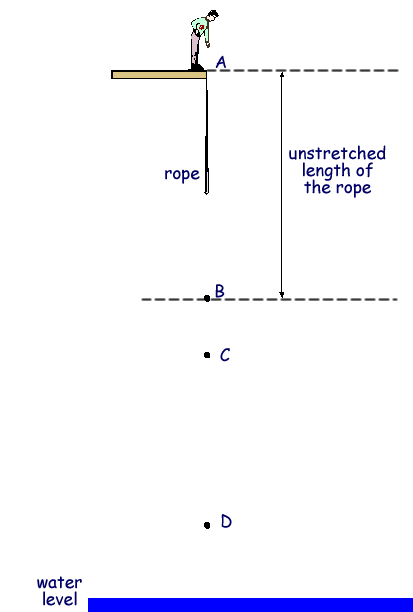Questions on Energy Transitions
Q12. A man does a 'bungee jump' over a lake.

He jumps from point A with an elasticated rope tied to his ankles. The rope reaches down to point B when it is not being stretched. The man falls past B, and the rope begins to stretch. He falls past point C to point D, which is the lowest point he reaches. Then he begins to move upwards again. Eventually he comes to rest at point C.
(a)
(i) At which point, A, B, C or D, is the man when the tension in the rope is greater than his weight?
1 mark
(ii) At which point, A, B, C or D, is the man when the tension in the rope is equal to his weight?
1 mark
(b) The graph shows how the man's speed varies with time as he falls from point A to point D and bounces back upwards. The point when the man jumped from A has been labelled on the curve. Label the points on the curve when the man was at points B, C and D as he fell.

3 marks
(c) The total energy of the man and the rope includes the man's potential energy, his kinetic energy, and the elastic (strain) energy stored in the stretched rope. Describe how the elastic (strain) energy in the rope changes as the man falls from point A to point D.
2 marks
Maximum 7 marks









